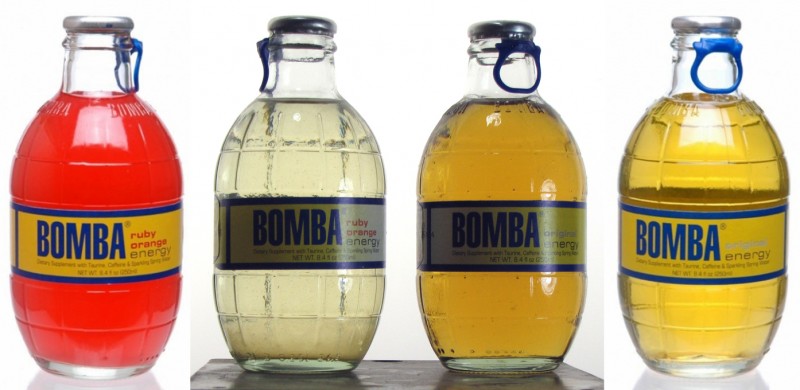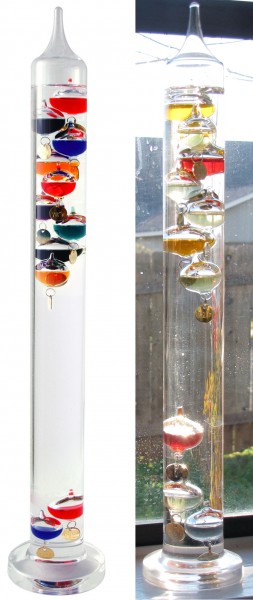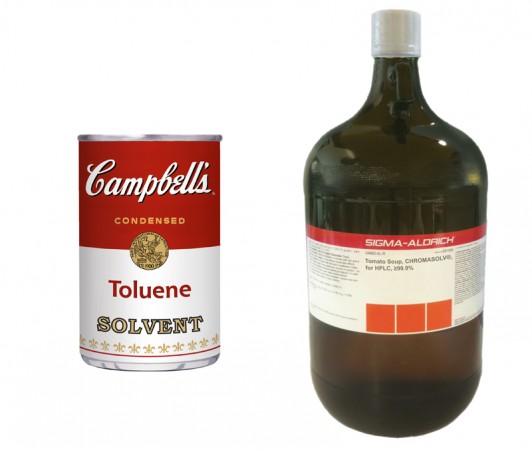I wrote quite some time ago about my interest in grenade-shaped energy drink Bomba as a cultural artifact. I bought the inner two bottles, shown above, in early 2009. Each is displayed next to a promotional photo of the same flavor; to left, “ruby orange,” and to right, “original.” My bottles are dated “best before 05.22.09” and “best before 09.07.09,” respectively.
Part of the Bomba gimmick is the “pin” on the bottle cap, so I never opened the bottles in order to preserve the effect. I displayed them, over the intervening years, with other bottles and knick-knacks in a windowsill. “Ruby orange,” left, has been bleached almost water-white, I presume by sunlight. Since the drink is so far past its expiration date, it is, I suppose, possible that some kind of very slow solution-phase bleaching process is responsible. But evident photobleaching of the inks on the paper labels on the outside of the bottles (as well as notable bleaching of other dyed solutions displayed in the same windows) strongly suggests that photochemistry is the culprit.
“Ruby orange” lists FD&C Red #40 on the label, whereas the apparently unaffected color of “original” Bomba, to right, lists “artificial color (caramel color)” in place of the red dye.



